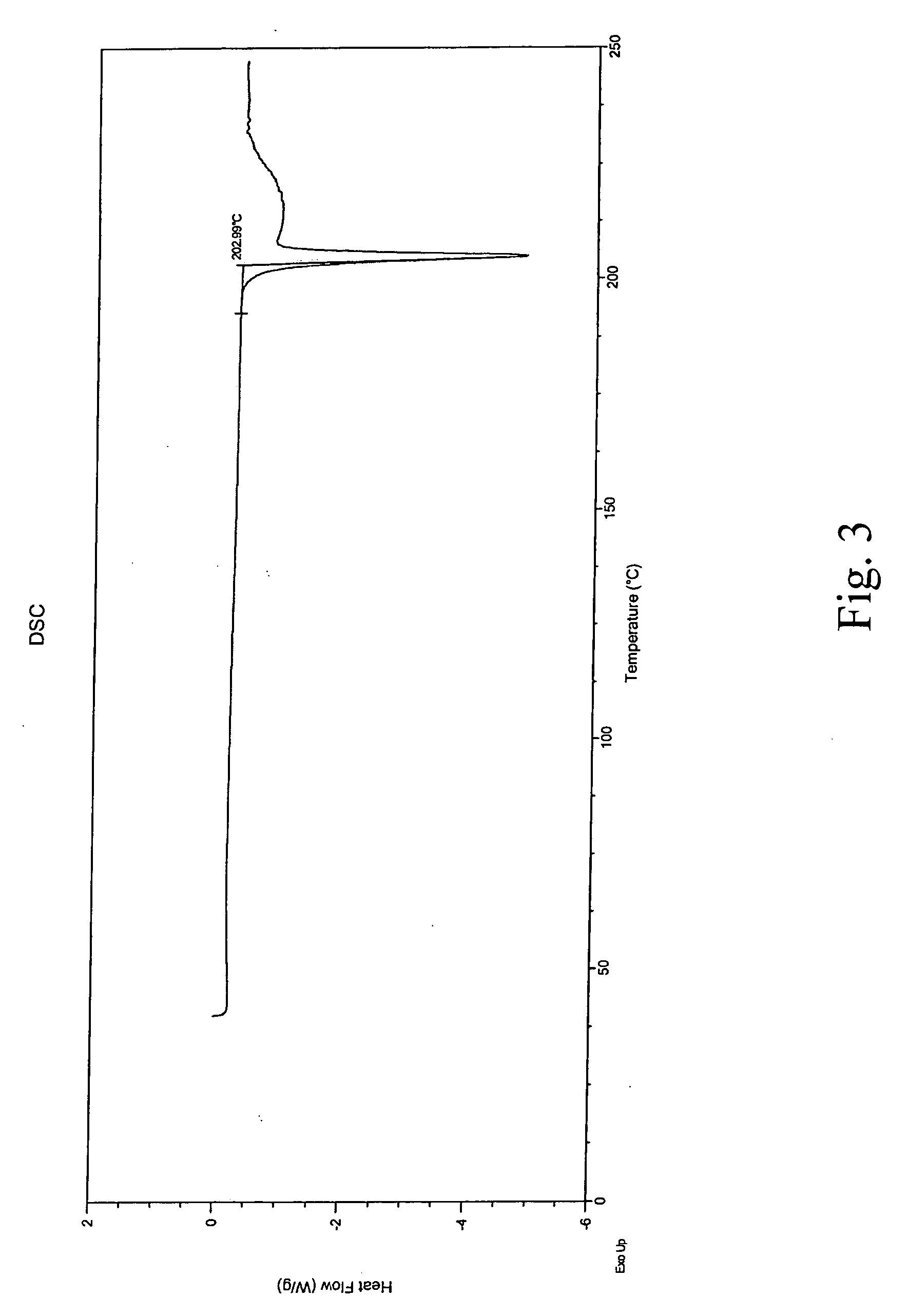Crystalline aripiprazole salts and processes for preparation and purification thereof
a technology of crystalline aripiprazole and process, which is applied in the field of crystalline aripiprazole salt and process for preparation and purification thereof, can solve the problems of unstable polymorphism, difficult manufacturing of active pharmaceutical ingredients, and low yield of conventional methods for producing crystalline aripiprazole base and aripiprazole hydrochloride, etc., and achieves improved properties and high yield
- Summary
- Abstract
- Description
- Claims
- Application Information
AI Technical Summary
Benefits of technology
Problems solved by technology
Method used
Image
Examples
example 1
[0119] This example describes the preparation of aripiprazole by reaction of 1-(2,3-dichlorophenyl)piperazine monohydrochloride with 7-(4-chlorobutoxy)-3,4-dihydro-2(1H)-quinolinone in the presence of phase transfer catalyst and potassium carbonate in a bi-phasic mixture containing toluene and water.
[0120] A reaction vessel was charged with 7-(4-chlorobutoxy)-3,4-dihydro-2(1H)-quinolinone [15.3 g, 0.064 mole], 1-(2,3-dichlorophenyl)piperazine mono hydrochloride (17.8 g, 0.0665 mole), potassium carbonate (9.2 g, 0.0667 mole), tetra-butylammonium bromide (1.8 g), toluene (230 ml) and water (92 ml). The mixture was heated under reflux for 13 hours. Then, the reaction mixture was cooled to about 65° C. and toluene was added (230 ml) and stirring was maintained for 15 minutes. The phases were separated and the aqueous phase was collected (about 96 ml). Water (77 ml) was added to the organic phase and the mixture was stirred at about 65° C. for 15 minutes. The layers were separated and t...
example 2
[0121] This example describes the preparation of aripiprazole maleate by crystallization from ethanol.
[0122] In a three necked round bottom flask equipped with a reflux condenser, a thermometer and a magnetic stirrer, aripiprazole (obtained by any method know in the art, e.g., according to example 1) (3 gram) was suspended in absolute ethanol (30 ml). The suspension was heated to reflux to form a solution. Then, a solution of 1.85M maleic acid in ethanol (0.86 grams of maleic acid in 4 ml ethanol) was added while maintaining the reflux temperature during few minutes. The mixture was left to cool to room temperature and stirred at room temperature for about an hour. Then, the mixture was cooled to about 5° C. and stirred at that temperature for about an hour. The resulting crystals were filtered, washed with cold ethanol (2 ml) and dried under reduced pressure to afford 3.6 gram of aripiprazole maleate in 96% yield.
examples 3-9
[0123] This example describes the preparation of other aripiprazole salts by crystallization from ethanol.
[0124] Preparation of other aripiprazole salts by crystallization from ethanol was carried out in the same manner as described in example 2, using different organic acids. The results are summarized in Table 12.
TABLE 12Preparation of aripiprazole salts by crystallization from ethanolusing various organic acids.Example No.Organic acidYield3oxalic acid78%4benzoic acid63%5malonic acid82%6fumaric acid78%7L-tartaric acid97%8L-malic acid88%9citric acid89%
PUM
| Property | Measurement | Unit |
|---|---|---|
| melting point | aaaaa | aaaaa |
| temperature | aaaaa | aaaaa |
| temperature | aaaaa | aaaaa |
Abstract
Description
Claims
Application Information
 Login to View More
Login to View More - R&D
- Intellectual Property
- Life Sciences
- Materials
- Tech Scout
- Unparalleled Data Quality
- Higher Quality Content
- 60% Fewer Hallucinations
Browse by: Latest US Patents, China's latest patents, Technical Efficacy Thesaurus, Application Domain, Technology Topic, Popular Technical Reports.
© 2025 PatSnap. All rights reserved.Legal|Privacy policy|Modern Slavery Act Transparency Statement|Sitemap|About US| Contact US: help@patsnap.com



